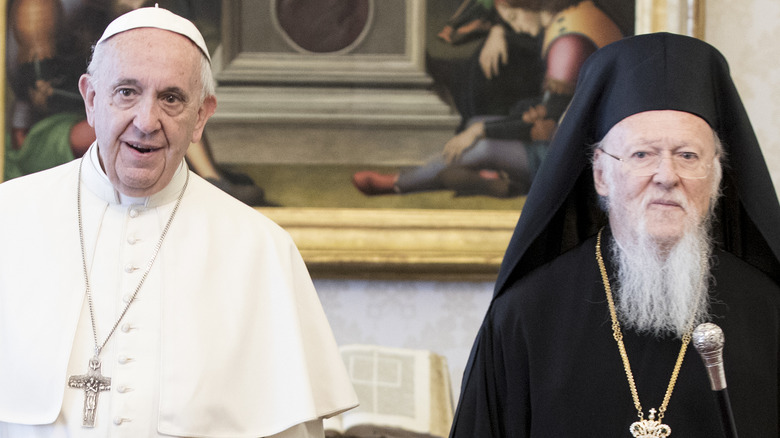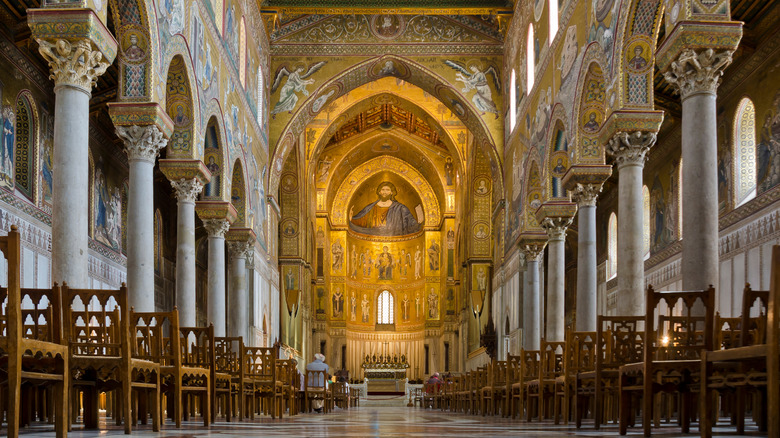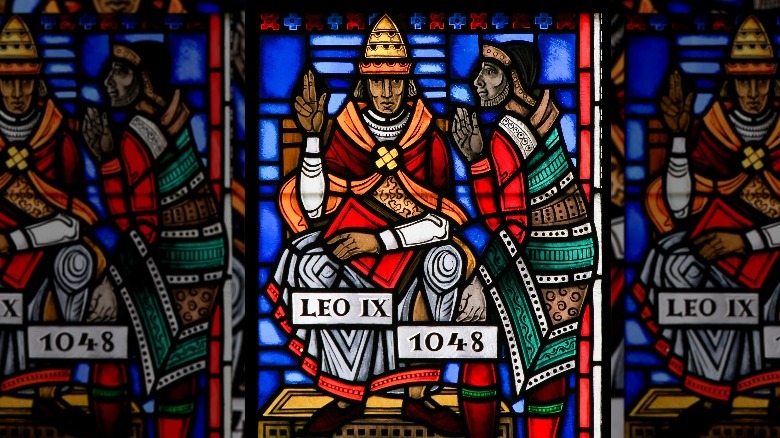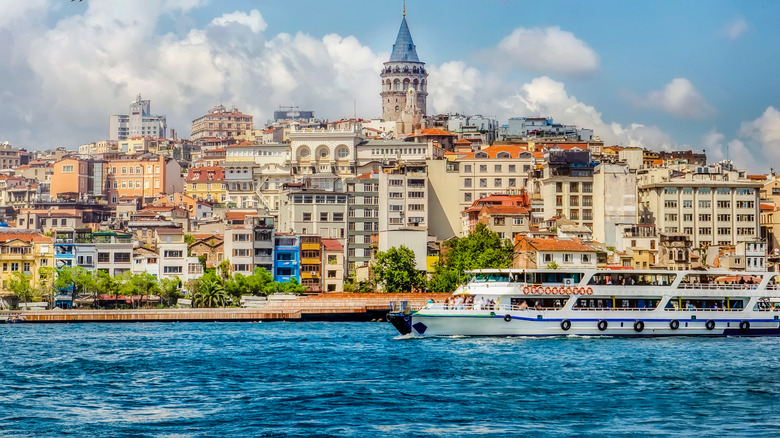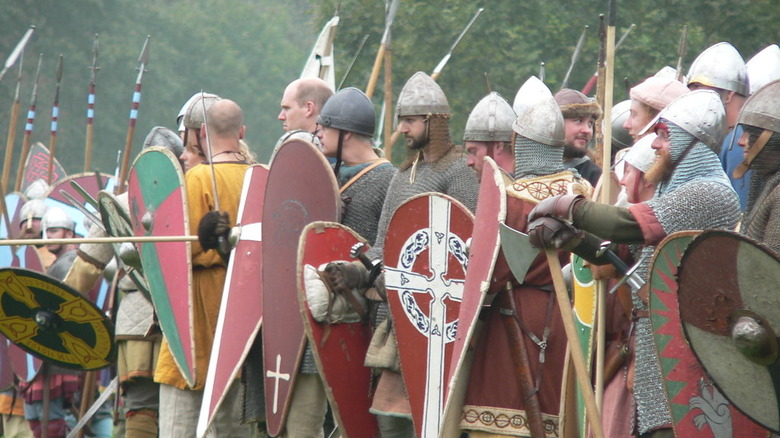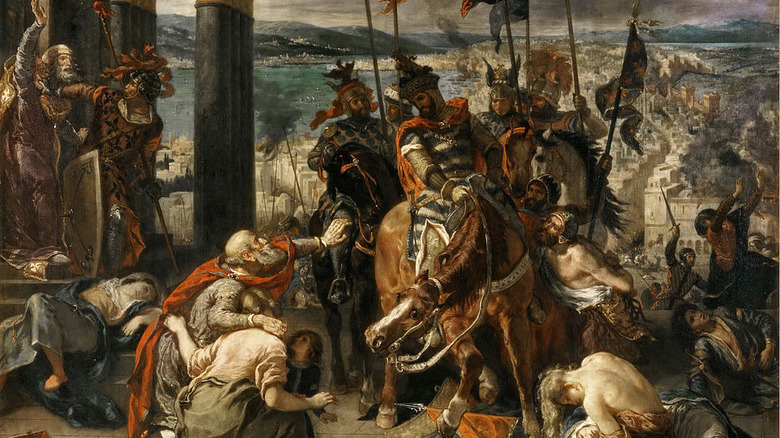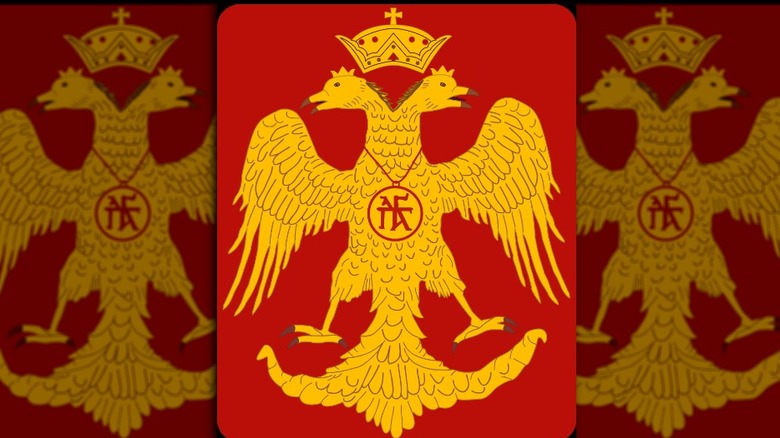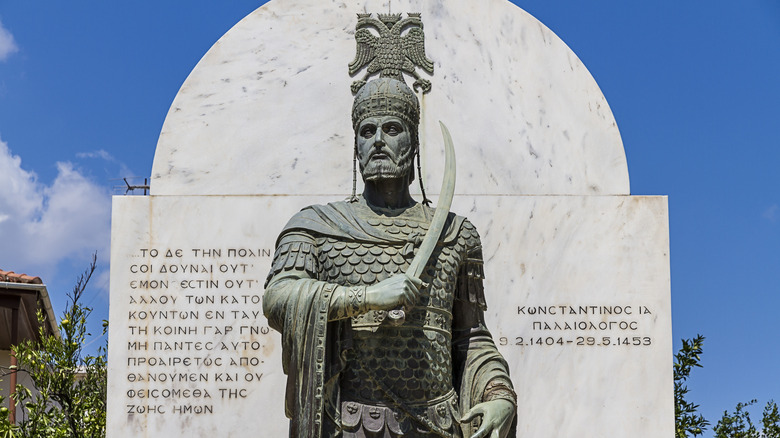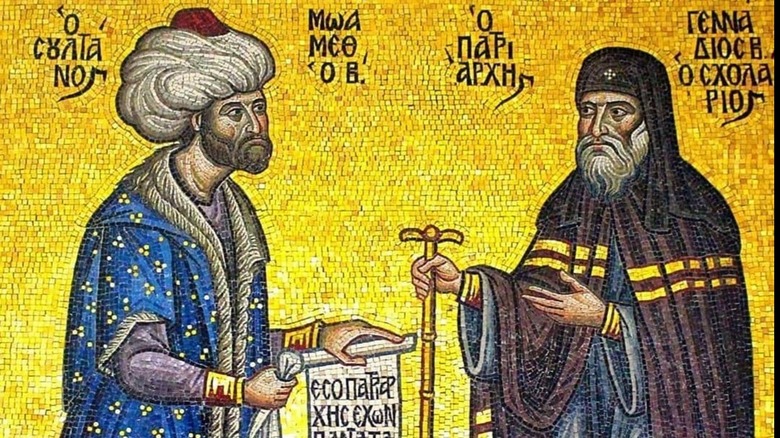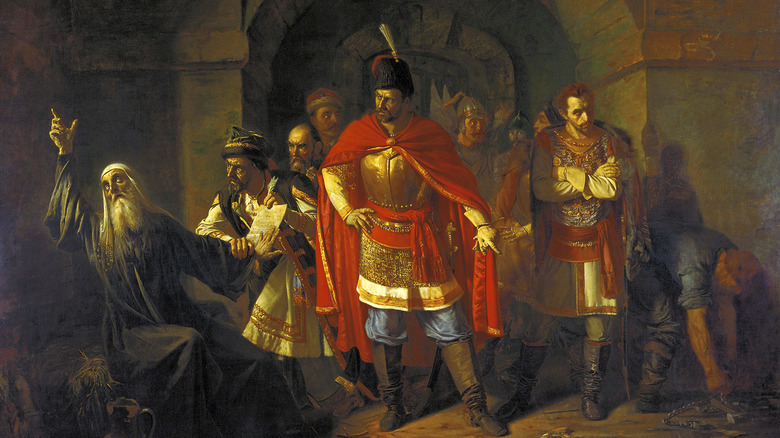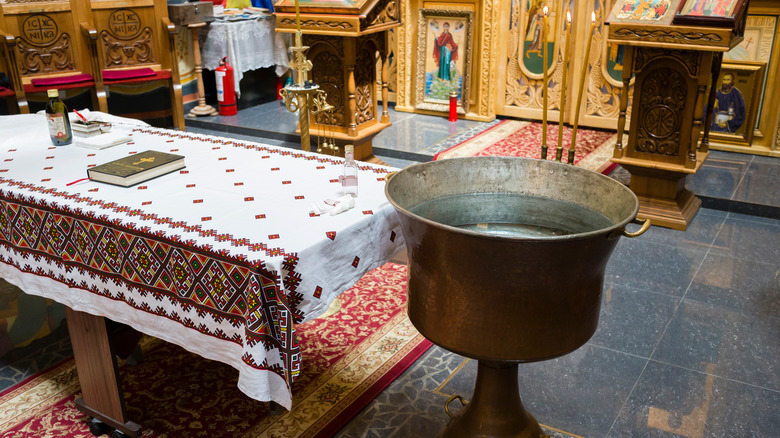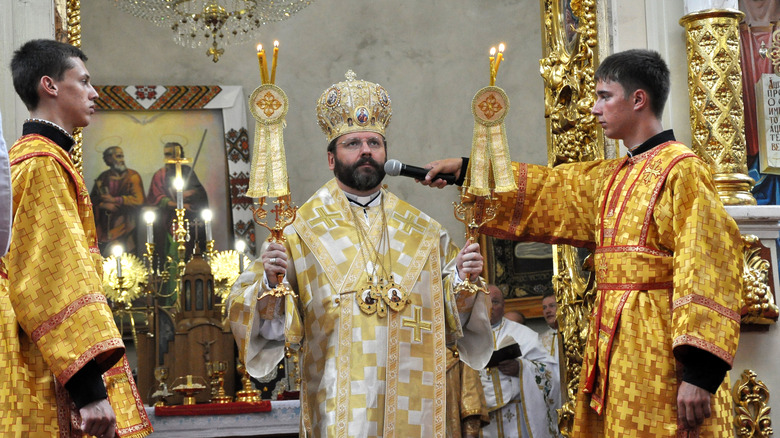Messed Up Things That Happened During The Great Schism
The Great Schism refers to the gradual divide that developed between the churches in the Latin West and the Byzantine East. It does not, as popularly thought, refer to the break in 1054. That, according to Catholic magazine Crux Now, was just one of many times the two sets of Christians clashed. But the 1054 break was ultimately the rift that would never be healed. The Catholic (Universal) Church split into two, the Roman Catholic Church and the Eastern Orthodox Church (both claim to be the Catholic Church). While there were theological issues behind the schism, such as the famous "filioque" clause, much of the schism was political maneuvering between popes, emperors, and their underlings.
As with all instances in which religion and politics have mixed, the Great Schism has resulted in its fair share of massacres, executions, persecutions, expropriations, and lawsuits. Some of these have occurred as recently as the last decade and are ongoing, highlighting the fact that the schism still plays a pivotal role in Catholic-Orthodox relations despite its millenarian history. Here are some of the more disturbing consequences of the schism, in which kings, politicians, and clergy pitted fellow Christians against each other to inflict, a problem that persists to this very day.
Shutting down each other's churches
One of the immediate major political causes of the Great Schism involved a dispute over Byzantine possessions in Southern Italy. According to medievalist Georgios Theotokis, during the 11th century, Norman adventurers took possession of much of Byzantine Italy. These Normans, however, were Latin (Western) Christians. The Byzantines were Greek Christians who, although were theoretically under Rome, in practice looked to the patriarch of Constantinople for leadership. When the Normans encountered these Greek Christians, they clashed, resulting in a backlash from Constantinople.
By 1053, the Norman invaders were in control of most of Southern Italy except for Bari. According to Christian History Institute, the Normans, as was typical in the Middle Ages, began systematically replacing bishops and other Byzantine clergy with candidates more amenable to their rule, who tended to be Latin Christians. In the process, Eastern customs and the Greek language were suppressed in favor of Latin in liturgical contexts.
In response to these actions, which had very little to do with the papacy, the patriarch of Constantinople, Michael Cerularios, retaliated against the Latin Church in 1052. Cerularios shut down Latin churches in Constantinople and ordered the Bishop Leo of Ochrid to compose a treatise against the customs and traditions of the Latin half of the church, accusing it of deviating from proper practices. This set the stage for the break of 1054.
The mutual excommunication of 1054
The Great Schism was not quite the earth-shaking event it is considered today. In fact, it resulted from a series of farcical interactions between Michael Cerularios and the papacy. The stubborn Cerularios had already fired the opening salvo through Leo of Ohrid. Pope Leo IX sent envoys to Constantinople to see if the two sides could reconcile their differences. Christianity had already endured numerous schisms and did not need another one, especially in the shadow of Islamic invasion. Unfortunately, he chose the wrong man for the job.
According to Christian History Institute, Pope Leo IX chose Cardinal Humbert de Silva to represent his office in Constantinople. But Humbert was very similar to Cerularios. Both were dogmatic, inflexible, and convinced of the correctness of their positions. The meeting between de Silva and Cerularios in Constantinople ended in a shouting match. Nothing had been resolved, so the cardinal dropped the hammer on the patriarch.
On a Sunday morning as the Hagia Sophia Cathedral was being prepared for Divine Liturgy, de Silva placed an excommunication decree for Cerularios on the main altar. According to EWTN, Cerularios then excommunicated the cardinal. With this action, the two bishops had barred each other from participating in church life. In the age of faith, this was one of the worst punishments possible. Although it was not clear at the time, the Eastern Orthodox Church had been officially born.
Massacre of the Latins
The excommunications were not meant to create separate churches. In fact, according to the Catholic Encyclopedia, Cardinal Humbert de Silva's excommunication only was meant for Michael Cerularios and a few of his supporters, not the whole eastern half of the church. But the eastern bishops took Cerularios' side, resulting in a hardening of attitudes towards Latin Christians that would fuel a massacre of Italian merchants in 1182.
Despite the schism, Constantinople, as a major trading hub, attracted a large community of Italian merchants. Their stranglehold on regional trade provoked discontent from local Greek merchants, who could not compete with them. Making things even worse, the merchants were Latin Christians.
Fueling the problems was the behavior of the Republic of Venice. According to medievalist Georgios Theotokis, Venice, originally a Byzantine ally, had become the policemen of the Aegean when the Byzantines were incapable of doing the job. As a result, their behavior had become increasingly arrogant. According to historian Donald Nicol, Emperor Manuel I tried to reduce Venetian privileges by distributing them to the other Italian republics. But this only served to bring more Italians to Constantinople from Genoa and Pisa.
After Manuel died, his French wife Maria of Antioch ruled as regent and favored her fellow Latin Catholic merchants over local Greeks. According to Nicol, Andronikos I overthrew Maria. As he marched towards Constantinople, Andronikos sent his troops to meet the clergy and incite the populace against the Italians, who were promptly massacred and their churches plundered.
The Norman sack of Thessalonica
The news of the Massacre of the Latins in 1182 triggered outrage in Catholic Europe and widened the schism. It also triggered calls for revenge, particularly in Southern Italy among the Byzantines' old Norman enemies. Against the backdrop of the schism, Norman Sicily and the Byzantines had been fighting in the Balkans and Southern Italy trying to take territory from the other. In 1185, the Normans invaded the Balkans for the third time, aiming for Constantinople with the pretext of installing a rival claimant to Andronicus I. The wealthy mercantile city of Thessalonica stood in their way.
According to historian Philip Schaaf, Norman forces under Count Alduin laid siege to the city, which had been left nearly defenseless. Historian Savvas Kyriakidis records that Norman forces smashed through the eastern wall and set about plundering the city. Orthodox churches, which were viewed by now as part of a separate church, were not spared. Only the zeal of the city's bishop Eustathios saved many of the inhabitants and their religious buildings from Norman rapacity. Despite the bishop's best efforts, however, around 7,000 of the city's inhabitants were massacred.
The sack of Thessalonica was one of many incidents between Latins and Greeks that although political in nature, only served to alienate the Greek and Latin halves of Christendom against each other. It was a prelude to the shameful event that still lingers in Orthodox memory today — the crusader sack of Constantinople in 1204.
The 4th Crusade sacks Constantinople
In 1202, crusaders were diverted from Palestine and Egypt to lay siege to Zara, notes Britannica. While traveling to the Holy Land, the crusaders were unable to fully pay the Venetian navy, which was transporting them. So the crusaders repaid Venice by sacking Zara before moving east. Eventually, they came to the Byzantine capital of Constantinople.
The crusaders had not come to Constantinople uninvited. According to Christian Today, Emperor Alexios IV had paid them to put him on the Byzantine throne. But a series of riots between pro- and anti-crusader factions resulted in his overthrow and execution by Alexios V. Problems began when Alexios V requested the crusaders leave. They agreed, but only if they were paid the money Aelxios IV had promised. When Alexios V refused, the crusaders laid siege to the city and sacked it in 1204.
As a result of the sack, the Byzantine empire disintegrated while Constantinople became the seat of a crusader state called the Latin Empire. According to chronicler Niketas Choniates, the final insult was the plunder of the Hagia Sofia and other numerous churches and monasteries throughout the city. Icons, statues, and other treasures were "borne away as booty." Reconciliation between Catholics and Orthodox was now impossible, and the sack of Constantinople, according to the government of Greece, continues to divide the Catholic and Orthodox worlds to this very day.
The gruesome and salacious politics behind the restoration
In 1261, the Latin Empire came to an end when Michael VIII Palaiologos captured Constantinople and declared himself Byzantine emperor. But his reign was marred with controversy. Upon his accession, he was supposed to designate the 11-year old John IV Laskaris as heir but, instead, blinded him. For this, historian J.M. Hussey notes that the Orthodox Church excommunicated him. So, he turned to the pope and the Roman Church for help. Michael sent envoys to Rome to probe Pope Urban IV for an alliance to neutralize crusaders seeking to dethrone him, but local Italians flayed one of them alive. Eventually, after negotiations with three popes, he offered to end the schism, which was achieved on paper at the 1274 Council of Lyons.
Now, Michael still faced Sicilian crusaders, so he offered King Manfred of Sicily a marital alliance. Michael would marry Manfred's sister, Anna. But Michael had a wife, the Empress Theodora. The solution? According to historian Deno Geanakoplos, he offered to divorce Theodora. Unfortunately for him, in true telenovela fashion, Theodora got upset, and the patriarch threatened to censure the emperor. In the end, it didn't matter. Anna rejected the emperor's advances. Despite his marital failure, Michael still managed to stabilize his position. Mending the schism would have furthered this end, but most of his clergy had no interest in it, and the Byzantine Empire's decline continued. There would be one last attempt to mend the schism, but the Byzantine Empire was running out of time.
The fall of Constantinople
Despite Michael Palaiologos' restoration of the Byzantine Empire, there would be no return to the glory days of old. It continued to lose territory, and by 1439 the Byzantine Empire consisted of little more than Constantinople, having lost its Balkan possessions to Serbia and the Ottoman Empire. Byzantine Emperor John VIII Palaiologos, knowing that the final reckoning was near, made one last desperate bid to save his crumbling empire.
In 1439, John's representatives met in Florence with the papacy to mend the schism. According to the Encyclopedia of Ukraine, the upper echelons of the Orthodox Church agreed to submit to papal authority and reincorporate themselves into the Catholic Church. Despite John's best efforts, the Byzantine populace and rank and file clergy overwhelmingly rejected the reconciliation. The architect of the union, Isidore of Kiev, was tossed into prison. Memories of the 1204 sack of Constantinople were still seared into the inhabitants' psyches, and there was no trust of Catholic Europe. The reverse was also true. The rulers of Western Europe were preoccupied fighting each other and took little interest in the failing Byzantine state.
The last Byzantine emperor, Constantine XI, only managed to secure support from a group of Genoese soldiers, who performed heroically during the 1453 siege of the city. The brief reconciliation with Rome did not yield any other support, and the Muslim Ottomans captured the city in 1453. They would ensure that the two halves of Christendom would never reunite to threaten Ottoman hegemony.
The Greek Orthodox Church falls to Islam
While the Catholic and Orthodox churches already were de facto separate churches by 1453, the schism crystallized as a result of Islamic interference and effective capture of the Greek Orthodox Church. To ensure that the Greek Orthodox Church would never reunite with Rome and pose a threat to Ottoman hegemony, Sultan Mehmet II took full control of the Patriarchate of Constantinople by giving himself the authority to appoint patriarchs.
Mehmet II brilliantly employed the divide and conquer strategy. He nominated a man named Gennadios II as patriarch, who was a vociferous opponent of union with Rome. Gennadios' appointment ensured that the Greek Orthodox Church would respect Ottoman authority, lending legitimacy to Mehmet's rule over the Christian Balkans. According to Philip Mansel, Mehmet in return placed all of the "Greek" Christians in the Ottoman Empire under Gennadios' authority and gave the patriarch the same powers he had enjoyed under the Byzantine Empire.
Mansel notes that today, a portrait adorns the offices of the Patriarchate of Constantinople showing Mehmet and Gennadios "embracing as equals." However, this romanticized image could not be further from the truth. Gennadios' appointment ensured that the Greek Orthodox Church existed at the pleasure of its new Muslim overlords. The consequences of this tragedy are visible today. According to Greek newspaper Ekathimerini, no Greek Orthodox priest may become patriarch of Constantinople (or even train as a priest) without the explicit permission of the Turkish government.
The death of Patriarch Hermogenes
The fall of Constantinople and the subjugation of the Greek Orthodox Church to Islam shifted the center of Orthodoxy north towards Moscow, where the nascent power of imperial Russia was being forged in blood and fire. According to Russia Beyond, Muscovy (Russia post-1547) declared itself the Third Rome, successor of Byzantium, and defender of Orthodoxy everywhere. The center of Orthodoxy also moved the conflicts around the Great Schism, which now centered on the conflict between Imperial Russia and Poland.
Polish king Sigismund III occupied Moscow in 1610 during a time of instability in Russia called the Time of Troubles. According to the Orthodox Church in America, the Poles found willing collaborators who agreed to help them spread Eastern Rite and Roman Catholicism throughout the Russian population. Patriarch of Moscow Hermogenes opposed them, calling the Russian collaborators traitors to the faith.
Hermogenes' exhortations inspired an uprising among Moscow's inhabitants. Sigismund promptly sacked the city, arrested the patriarch, and shut himself and his forces inside the Kremlin. Here, Sigismund offered Hermogenes a simple choice. He could either tell his supporters to go home, or he would die. The patriarch stood his ground and instead blessed the insurgents. For this, he was thrown into prison, where he died of starvation. Hermogenes' sacrifice was not in vain. Eventually, Moscow was liberated from Polish occupation in 1612, and he became a martyr and saint.
Catholicism is declared heretical
By the 18th century, reconciliation between the two halves of the old Universal Church seemed impossible. To add fuel to the fire, the Catholic Church had managed to reconcile with numerous Orthodox communities in areas under Catholic rule. Orthodox communities in places like Slovakia, Western Ukraine, and Albania were brought back as Greek/Eastern Catholic churches. In return for loyalty to Rome, they were allowed to keep their Orthodox customs and liturgy, notes Britannica.
Alongside this were numerous disagreements over religious practices that were summed up in the very long papal encyclical Allatae sunt. As a result of theological disagreements and political rivalries, the Orthodox Church effectively declared the Catholic Church (and Protestants too) to be non-Christians in 1755.
The 1755 Synod of Constantinople concluded that the Catholic Church and its Protestant offshoots were heretical entities. Any Catholic or Protestant converts to Orthodoxy had to be rebaptized, while all Catholic sacraments were declared invalid. Although, according to the USCCB, the decree has never been rescinded, both churches view baptism the exact same way, making it difficult for Orthodox to argue that Catholic baptism doesn't count. In practice, Orthodox Churches seem to agree, since according to St. Demetrios Greek Orthodox Church, Catholics and mainline Protestants do not need to be rebaptized to join the Orthodox Church (and vice-versa).
The fall of communism reignites the schism
Per Pew Research, Muslim persecution of members of both churches in the Middle East and the spread of Islam in Europe has influenced better ties between the Catholic and Orthodox worlds. But the Great Schism has continued to rear its ugly head even in modern times, under the guise of the 20th century's most murderous ideology — communism.
The 1945 Yalta Conference handed over Eastern Europe's Christians to Soviet brutality. According to the Atlantic Council, Joseph Stalin ruthlessly liquidated the Ukrainian Greek Catholic Church (UGCC), which could not be easily controlled due to their Roman loyalties. Bishops were tortured or deported to Siberia, while others were coerced into voting for reunification with a complicit Russian Orthodox Church.
In 1990, communism fell, and Greek Catholics resurfaced, only to find their churches in Orthodox hands. Catholics didn't care. The Los Angeles Times records that in Czechoslovakia, Catholics reclaimed their old churches and expelled their Orthodox congregants, setting off religious disputes that divided old neighbors. According to the Religious Information Center of Ukraine, the UGCC has tied up the Russian and Ukrainian Orthodox churches in numerous lawsuits over confiscated property. The Russian Orthodox Church has denied any wrongdoing, even claiming that the forced reunion was legitimate. Many of these cases are still pending. Finally, the Romanian Greek Catholic Church has reported intimidation and harassment from Orthodox authorities as it attempts to reclaim its properties. Thus, the schism lives on 1,000 years later.
